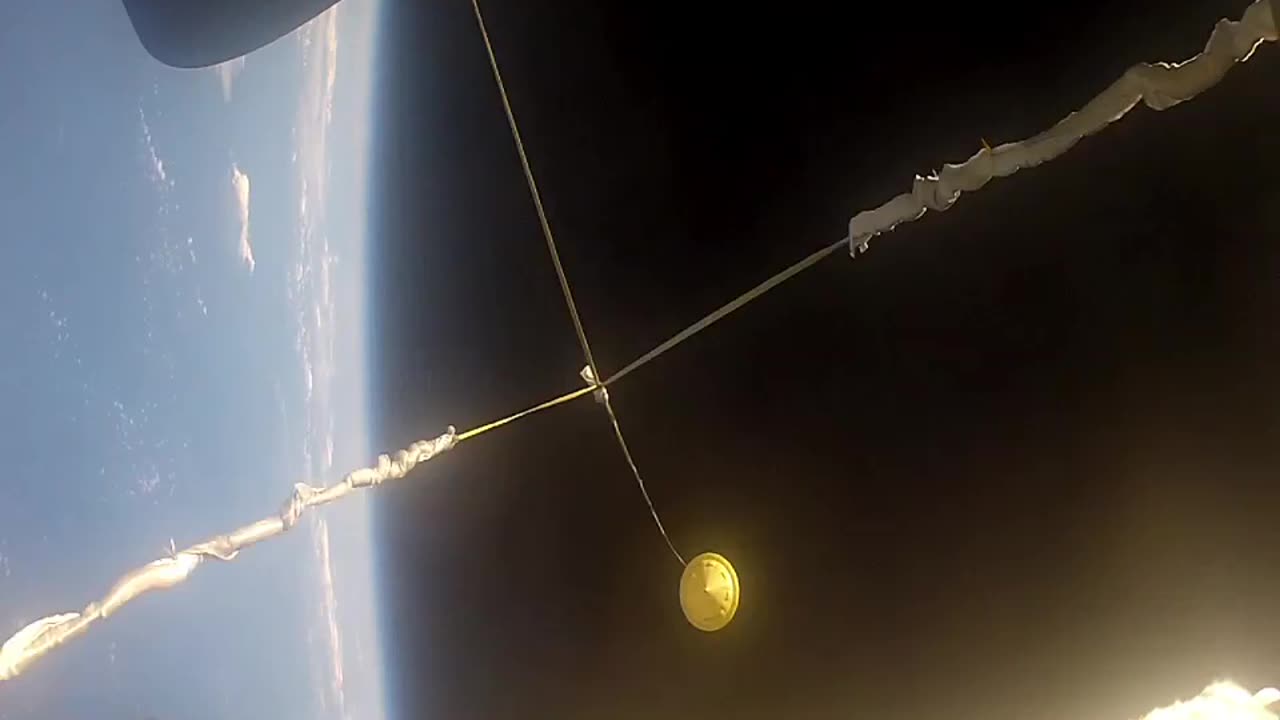Premium Only Content

High-Def Video of NASA's 'Flying Saucer' Test
Transcript
On June 28th, NASA's Low-Density Supersonic Decelerator project conducted the first shakeout flight of a new way of testing technologies that will one day be used to land heavier, more massive payloads on the surface of Mars.
We used a large 34-million cubic foot scientific balloon to hoist a 7,000 pound test vehicle to an altitude of 120,000 feet. The test vehicle was then released from the balloon, spun up for stability and a large solid rocket motor accelerated to over four times the speed of sound and an altitude of 180,000 feet, a condition very similar to conditions you would see at Mars.
Once we reached the correct speed and altitude, we de-spun the vehicle. And then we got a chance to test our new supersonic inflatable decelerator.
The camera lends covers deploy. We see that it inflated very uniformly, without disturbing the vehicle too much.
And now we're seeing previously-unreleased high-definition, high-resolution, high-speed video, taken during the test. We used this supersonic inflatable decelerator to slow us to something closer to two and a half times the speed of sound.
We used a ballute to help deploy the new supersonic parachute. The ballute is shot out the back of the vehicle at over 200 feet per second. And then we cut the ballute free and it begins to pull the parachute off the back of the vehicle.
As the parachute begins to inflate, we see one of the surprising aspects of this test, which is the early on set of tears in the parachute.
We see where those tears began, how they propagated and otherwise how the parachute behaved as it began trying to inflate behind this very blunt object, moving two and a half times the speed of sound, punching a hole in the atmosphere, and creating an extremely turbulent, chaotic environment for the parachute to exist in.
We now have a data set that we will use to prepare for two more tests beginning in June of 2015.
-

Flyover Conservatives
12 hours agoOnly 17% of Millennials Hit These 5 Adult Milestones—Why?; What If Childhood Trauma Is Behind Your Health Problems? - Dr. Troy Spurrill | FOC Show
18.6K2 -
 4:49:04
4:49:04
HogansAlleyHero
14 hours ago💥CHASING DOPAMINE💥✅TRUMP SAYS BATTLEFIELD IS THE BEST✅
24.7K -
 1:57:40
1:57:40
MattMorseTV
5 hours ago $6.62 earned🔴Trump just SHATTERED the PROJECTIONS.🔴
42.1K28 -
 2:32:19
2:32:19
megimu32
3 hours agoOTS: From Star Search to Superstardom
29K4 -
 1:56:21
1:56:21
Joker Effect
2 hours agoInterviewing GREENMAN! Looks like he is coming to Rumble! Let's give him a warm welcome! REAL TALENT
17.1K1 -
 1:07:21
1:07:21
Anthony Rogers
9 hours agoEpisode 380 - Is Pain All In Your Head?
11.9K2 -
 1:46:17
1:46:17
Glenn Greenwald
7 hours agoGlenn Takes Your Questions on Censorship, Epstein, and More; DNC Rejects Embargo of Weapons to Israel with Journalist Dave Weigel | SYSTEM UPDATE #505
112K7 -
 LIVE
LIVE
Jokeuhl Gaming and Chat
8 hours agoHelldivers 2 - Spreading Democracy w/ Ryker
149 watching -
 27:47
27:47
Stephen Gardner
4 hours ago🚨BREAKING: Trump FURIOUS Over Kamala’s Latest Move – SHOCKING Details!
15.7K63 -
 8:00:13
8:00:13
Dr Disrespect
12 hours ago🔴LIVE - DR DISRESPECT - GEARS RELOADED GLOBAL LAUNCH - CRUSHING LOCUST
112K14